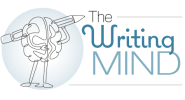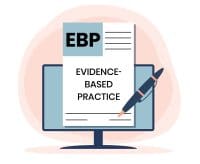Make a ‘SMART’ New Year’s resolution.
It’s time to ditch the traditional New Year’s resolutions. After all, how many times can you resolve to lose weight or exercise more? This year, I challenge you to make a more meaningful resolution:
Resolve to write.
That means writing in all its many dimensions, from writing for publication to journaling to process the day’s stresses. However, here I’m focusing on writing for publication, an important professional responsibility. Writing enables us to share our expertise, which promotes evidence-based practice and better patient outcomes. Writing also can be a way to help others navigate their career path and a way to share meaningful experiences (think of that patient who left an indelible impression on you) that remind us of why we chose this profession.
To ensure your resolution to write is successful, follow these steps.
- Answer the “why” question. Think about why it’s important to you to achieve this resolution. Maybe it’s personal satisfaction or a desire to advance your career. Be wary if your answer lies in external rather than internal sources. For example, are you planning to write an article because it will help you in your quest to become a professional development coordinator or because your supervisor thinks it would help you “grow”? You’ll be far more likely to achieve your resolution if it’s the former. Shari Leid recommends using a 1-to-10 scale to rate how important achieving the resolution is to you. If the score is 7 or lower, redefine the resolution.
- Write down your resolution. Seeing your goal in print or on screen may help you internalize it.
- Be “SMART.” Use the SMART acronym when writing your resolution. Rather than “I’m going to get published,” try something like: “By July 1, I’m going to submit one manuscript to a journal or newsletter.” This type of resolution is:
- Specific: one manuscript
- Measureable: whether the article is submitted
- Attainable: allow yourself enough time. Note that you plan to “submit” not necessarily get “published” since that depends on factors you have less control over. For instance, an article might be accepted, but not be published for several months.
- Relevant: related to your goal of getting published
- Time-based: “July 1.”
- Break it down. Create a plan to help you meet your goal. The plan should consist of steps you’ll need to achieve along the way. In the case of writing an article, these would include determining a topic, asking an editor if they’re interested in the topic, writing an outline, writing the first draft, asking for input from colleagues, and revising and submitting the manuscript.
- Hold yourself accountable. Accountability is essential for success. One way to hold yourself accountable is to ask friends or colleagues to tell you when you’re slipping away from your resolution. For example, share with a trusted colleague that you plan to query the executive editorial director of American Nurse Journal about an idea for an article by February 1 and ask the colleague to check with you to verify it was done.
- Learn from failure. A blog at Harvard Health Publishing says that when you fail, you should consider it a step toward your goal. If you didn’t get that outline done on time, for example, think about why. It may be that you didn’t allow yourself enough time. If so, you’ll know to be a bit more conservative on time estimates in the future.
- Reward yourself. A year can easily fly by without achieving your resolution because of distractions and competing demands from work and home. To keep focused, reward yourself for your interim successes. For instance, when you finish the first draft of your manuscript, do something fun, whether it’s treating yourself to an ice cream sundae, spending the day at the zoo with family, or something else entirely. Do it again when you submit your manuscript. (Even if it isn’t accepted for publication, you have still accomplished something many others haven’t.) And, of course, have a very special celebration when you reach your goal!
References
Harvard Health Publishing. Seven steps for making your New Year’s resolutions stick. November 24, 2020. health.harvard.edu/staying-healthy/seven-steps-for-making-your-new-years-resolutions-stick
Leid S. How to create successful New Year’s resolutions in five easy steps. Thrive Global. December 26, 2020. thriveglobal.com/stories/how-to-create-successful-new-years-resolutions
Saver C. Anatomy of Writing for Publication for Nurses. 4th ed. Indianapolis, IN: Sigma Theta Tau International; 2021.


I’ve been a full-time professional nurse writer and editor for many years, and that doesn’t count the writing I did as I fulfilled my nursing roles in clinical, research, education, and management. My passion is helping nurses share their expertise through the written word, including, but not limited to, publication. Writing can be scary and intimidating. I hope to make it less so and to help you develop your writing skills the same way you’ve developed your nursing skills.
Whether you’re considering your first or your 50th publication, want to contribute to your organization’s newsletter, or crave to be a better communicator online and in print, I hope you’ll find what I write helpful. The nurse publishing colleagues I’ve learned from over the years (many of whom are contributors to my book) may not be listed by name, but I’m grateful for their willingness to share. In that spirit, I’m looking forward to sharing with you! If you have feedback, feel free to email me at csaver@healthcommedia.com.



















